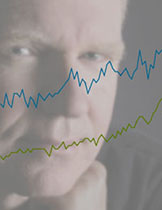News Flash: BI Discovers the Obvious
April 8th, 2009I was surprised to find the obvious reported as news today when I read Ted Cuzzillo’s latest article for TDWI’s newsletter BI This Week titled “The New Breed of BI Analyst.” I suppose I shouldn’t have been surprised, because vendors and other organizations that support the business intelligence industry sometimes claim to have discovered something new that has existed and has been obvious all along. The huge population of data analysts who are, according to Scott Davis of Lyzasoft (as quoted in the article), “determined, resourceful, and distrustful of data managers who presume to think for them” is probably the oldest and largest group of data analysts that’s been around since the advent of information technology (IT). Anyone who has ever worked in decision support (data warehousing, business intelligence, business performance management, etc.) has been aware of these analysts all along. Some have opposed them as “annoying users who make our lives difficult by working around our controls” (my paraphrase of a sentiment often expressed by folks in IT) and others have worked hard to support them by providing access to data and useful tools, but they all know that this is not a “new breed of BI analyst” that was recently discovered as the article suggests through “research by LyzaSoft” and work by “Microsoft’s Gemini program.”
When a vendor or a consultant has nothing new to offer but is desperate to win clients, it is tempting to claim a new discovery by shrouding the obvious and familiar in new terminology. In this case, however, no attempt has been made to disguise it; it’s just old news. Come on Lyzasoft and Microsoft, don’t insult the intelligence of the business intelligence community by gluing a carrot on the head of a goat and calling it a unicorn. That only works at carnivals for children and drunks.
The fact that two of the BI industry’s longtime leaders—Wayne Eckerson and David Wells—were cited in the article should not be taken as a confirmation of its claims. I respect their work and know firsthand that they don’t view the type of analyst that’s described in this article or the importance of their analytical needs as a new discovery. I also respect the work of the article’s author, Ted Cuzzillo, and can’t imagine why he considered this news. Has the BI industry really become this desperate for something worthwhile to write about? Are we allowing vendors to tell us what’s news rather than finding it on our own? Is any BI organization supporting the work of journalists like Cuzzillo in a way that makes it possible for them to really investigate what’s going on or are they supporting them just enough to pick the low-hanging fruit?
Take care,






